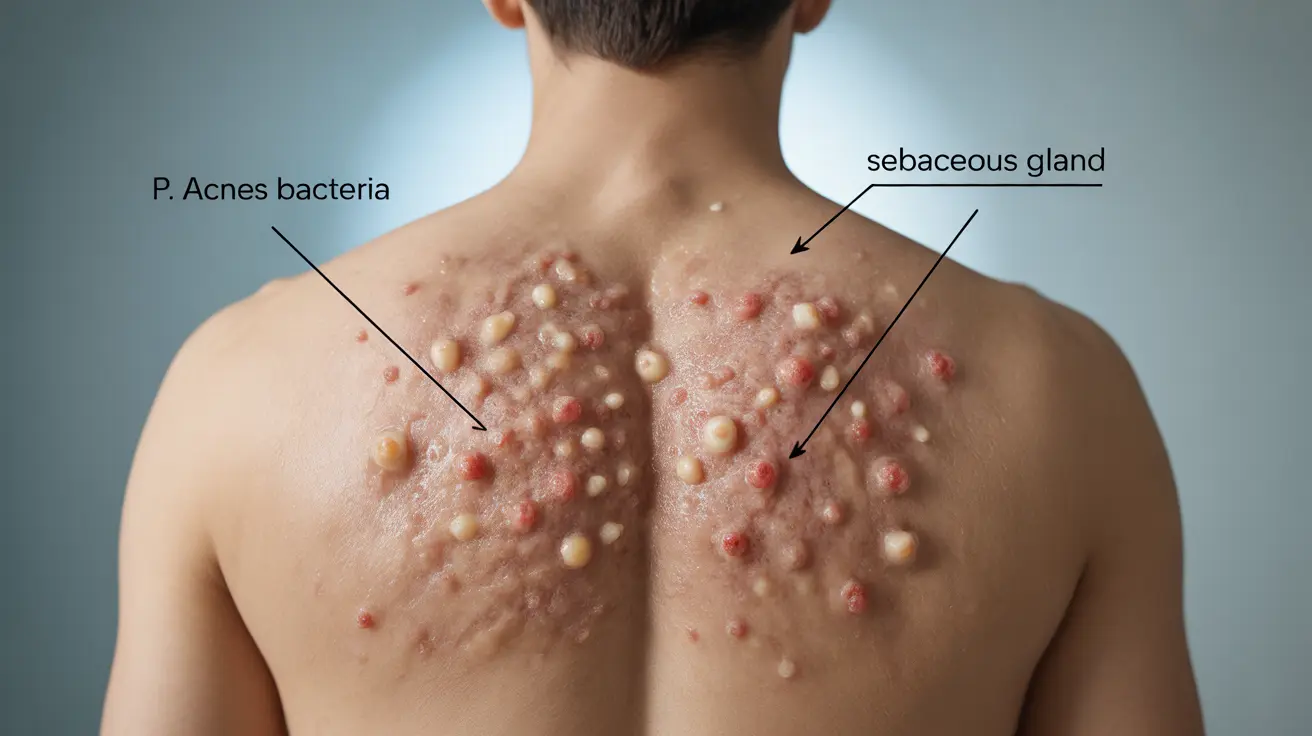Back acne, often called "bacne," can be a frustrating and uncomfortable skin condition that affects many people. This comprehensive guide will help you understand the causes of back acne, explore effective treatment options, and learn prevention strategies to keep your skin clear and healthy.
Whether you're dealing with occasional breakouts or persistent back acne, understanding the underlying causes and available treatments is crucial for managing this condition effectively. Let's explore everything you need to know about tackling back acne and maintaining clear skin.
Understanding Back Acne: Causes and Risk Factors
Back acne develops when hair follicles become clogged with oil, dead skin cells, and bacteria. Several factors can contribute to its development:
- Excess oil production
- Hormonal changes
- Sweating
- Tight clothing
- Genetic predisposition
- Poor skin cell turnover
The skin on your back has more oil glands than many other body parts, making it particularly susceptible to acne formation. Additionally, friction from clothing and backpacks can trap sweat and bacteria against the skin, creating an environment where acne thrives.
Effective Treatment Strategies for Back Acne
Over-the-Counter Solutions
Several effective over-the-counter treatments can help manage back acne:
- Salicylic acid cleansers
- Benzoyl peroxide body washes
- Alpha-hydroxy acid (AHA) products
- Tea tree oil-based treatments
- Medicated body sprays
When selecting products, look for those specifically formulated for body acne, as these tend to be more effective for the thicker skin on your back.
Prescription Treatment Options
For more severe cases of back acne, prescription treatments may be necessary:
- Topical retinoids
- Prescription-strength benzoyl peroxide
- Oral antibiotics
- Hormonal medications
- Isotretinoin for severe cases
Prevention and Lifestyle Changes
Implementing these lifestyle changes can help prevent back acne breakouts:
- Shower immediately after sweating
- Wear loose-fitting, breathable clothing
- Change clothes regularly
- Use non-comedogenic body products
- Regularly wash bed sheets and towels
- Avoid touching or picking at existing acne
Proper Skincare Routine
Establish a consistent skincare routine specifically for your back:
- Cleanse thoroughly twice daily
- Use a long-handled brush or loofah to reach all areas
- Apply treatments evenly across affected areas
- Allow products to fully absorb before dressing
- Maintain good overall hygiene
When to Seek Professional Help
Consider consulting a dermatologist if:
- Back acne persists despite over-the-counter treatments
- You develop deep, painful cysts
- Acne causes emotional distress
- Scarring begins to occur
- Traditional treatments aren't providing results
Frequently Asked Questions
1. What are the most common causes of back acne and how can I prevent it? Back acne is primarily caused by clogged pores from excess oil, dead skin cells, and bacteria. Prevention includes regular showering after sweating, wearing breathable clothing, and using non-comedogenic products.
2. How do I treat back acne, and what are the best over-the-counter products to use? The most effective over-the-counter treatments include benzoyl peroxide body washes, salicylic acid cleansers, and alpha-hydroxy acid products. Look for products specifically formulated for body acne.
3. What are the benefits and risks of using benzoyl peroxide for back acne? Benzoyl peroxide effectively kills acne-causing bacteria and reduces inflammation. However, it can cause dryness, irritation, and may bleach fabrics. Start with a lower concentration and gradually increase as tolerated.
4. When should I seek medical help for persistent back acne, and what are the treatment options? Seek medical help if acne persists despite over-the-counter treatments, causes significant pain, or leads to scarring. Professional treatments may include prescription topicals, oral antibiotics, or other medications.
5. How can I best manage and prevent back acne through lifestyle changes and skincare routines? Maintain a consistent skincare routine, shower after sweating, wear loose-fitting clothes, and use appropriate skincare products. Regular exfoliation and proper hygiene are essential for prevention.




